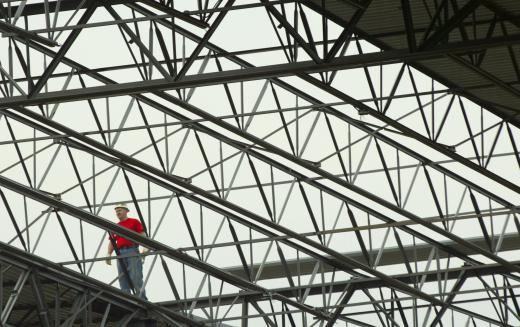A rafter can be described as the beam providing the necessary support and stability to the roof. They are mandatory for functional roofs and they provide an eye appealing design when left exposed. The rafter hanger is used for the joining of the rafter to the structural framing and it provides a much stronger connection than conventional nails and screws. Although they are made from the same materials as screws and nails are, the hangers are stronger and harder considering their responsibilities of sheathing the roof rafters and providing them the necessary equilibrium. The rafter hanger is used to provide support to the rafters and the surrounding joists.
There are seven basic types of rafters, including the common, hip and jack, valley and valley jack, cripple jacks, and the flying hip rafters. Depending upon various different specifics of the roof, a rafter hanger of the correct angle and strength will have to be used. No matter what the type of building is, a roof is required. The rafter hanger used will depend upon the angle of the roof, the type of the roof, and the size of the run between each of the joists. The bigger the span, the more weight that the hangers will be required to support.

The rafter hangers are used to wrap across the beams and then the connecting plate on the hanger is employed to connect it to the other structural framing components. If the building framing is made from steel and other heavy metals, then the hangers will be welded into place, rather than with nails and screws. These rafter hangers come in many designs and sizes, depending upon the load and heavy floor requirements. Most of them come in the shape of a U and are designed to fit each particular size of joist, whether wood or metal. In certain applications, though, a T shaped hanger will be required because of the design of the rafters and the joists.
Rafter hangers are a common piece of hardware that is overlooked by many builders, but in truth, they are an integral part of it. In order for the walls and the rafters to withstand the weight of the roofing materials, and account for variables such as snow, rafter hangers need to be installed. The hangers themselves increase the weight limits of the roofs to allow for the required weight, as well as for any variables that may occur during the life of the roof. This concept not only applies to large structures, but to smaller sized buildings as well.
